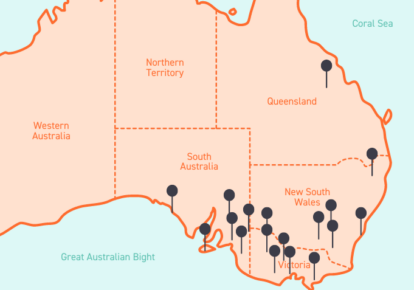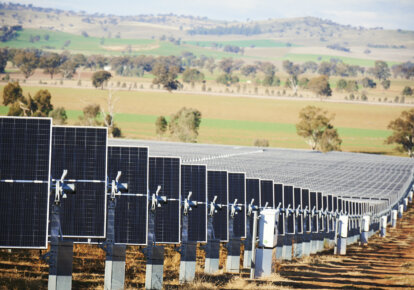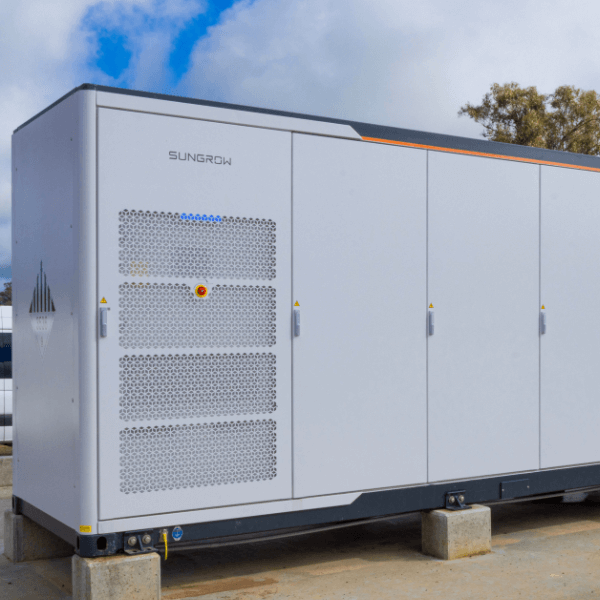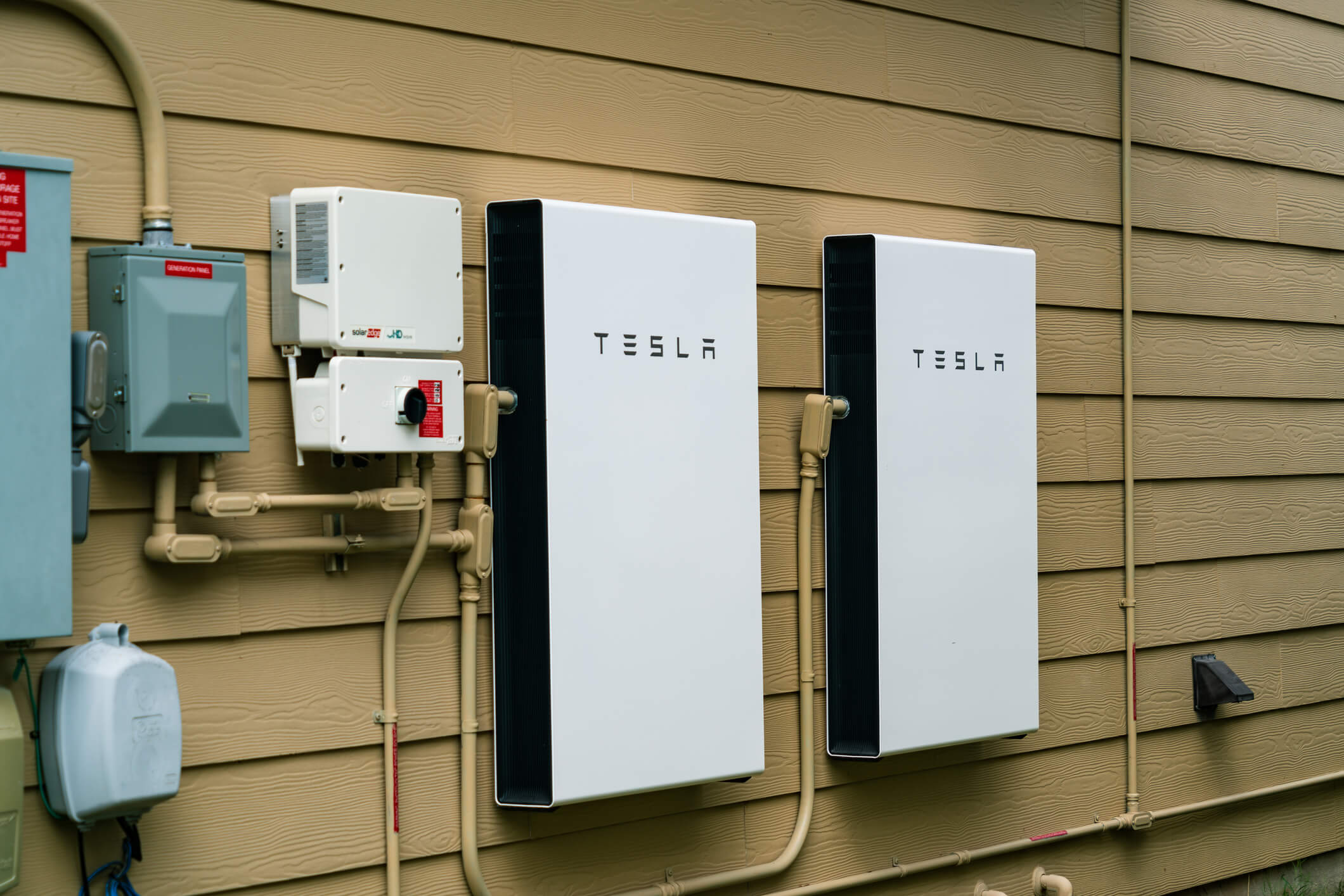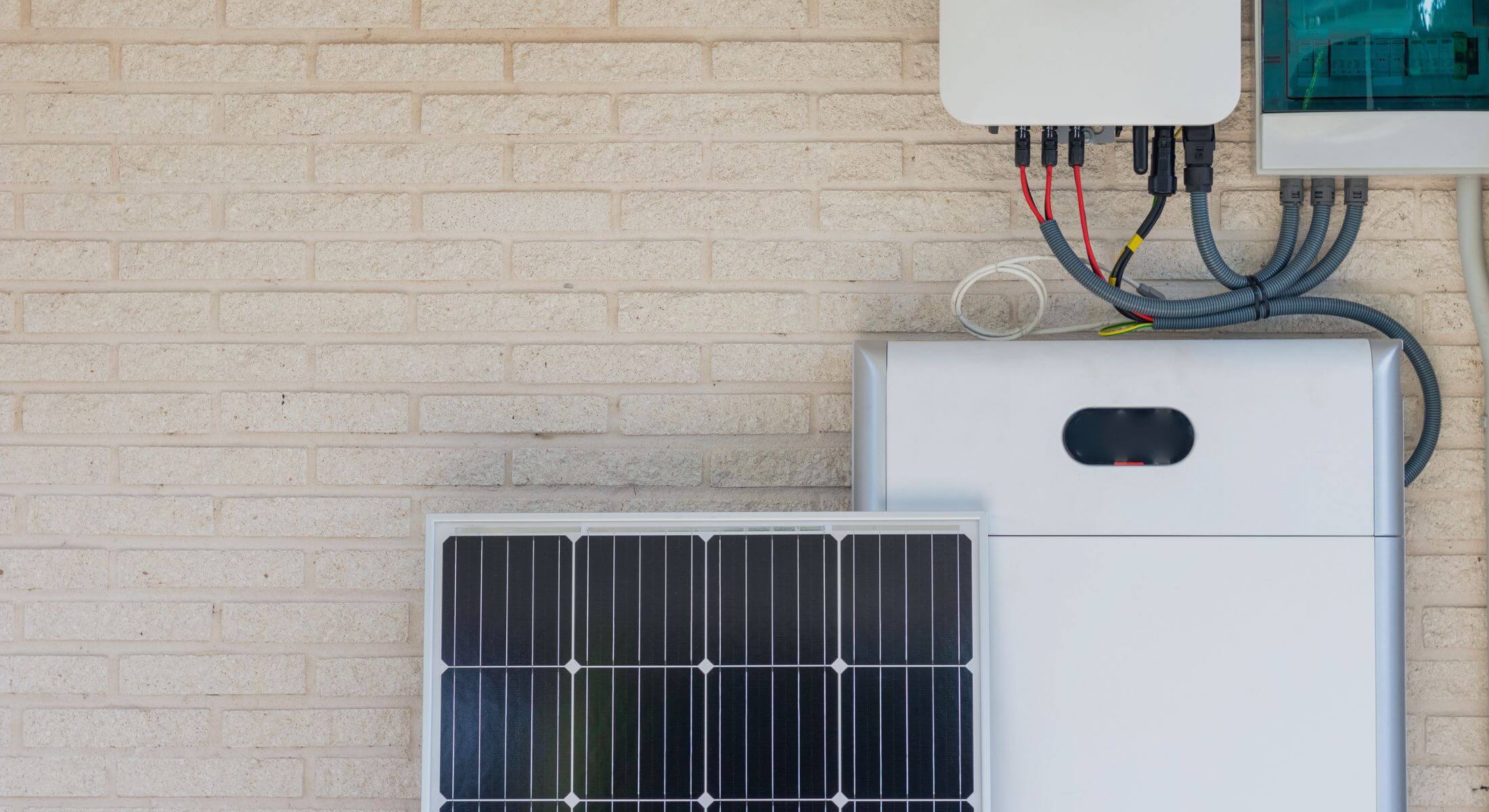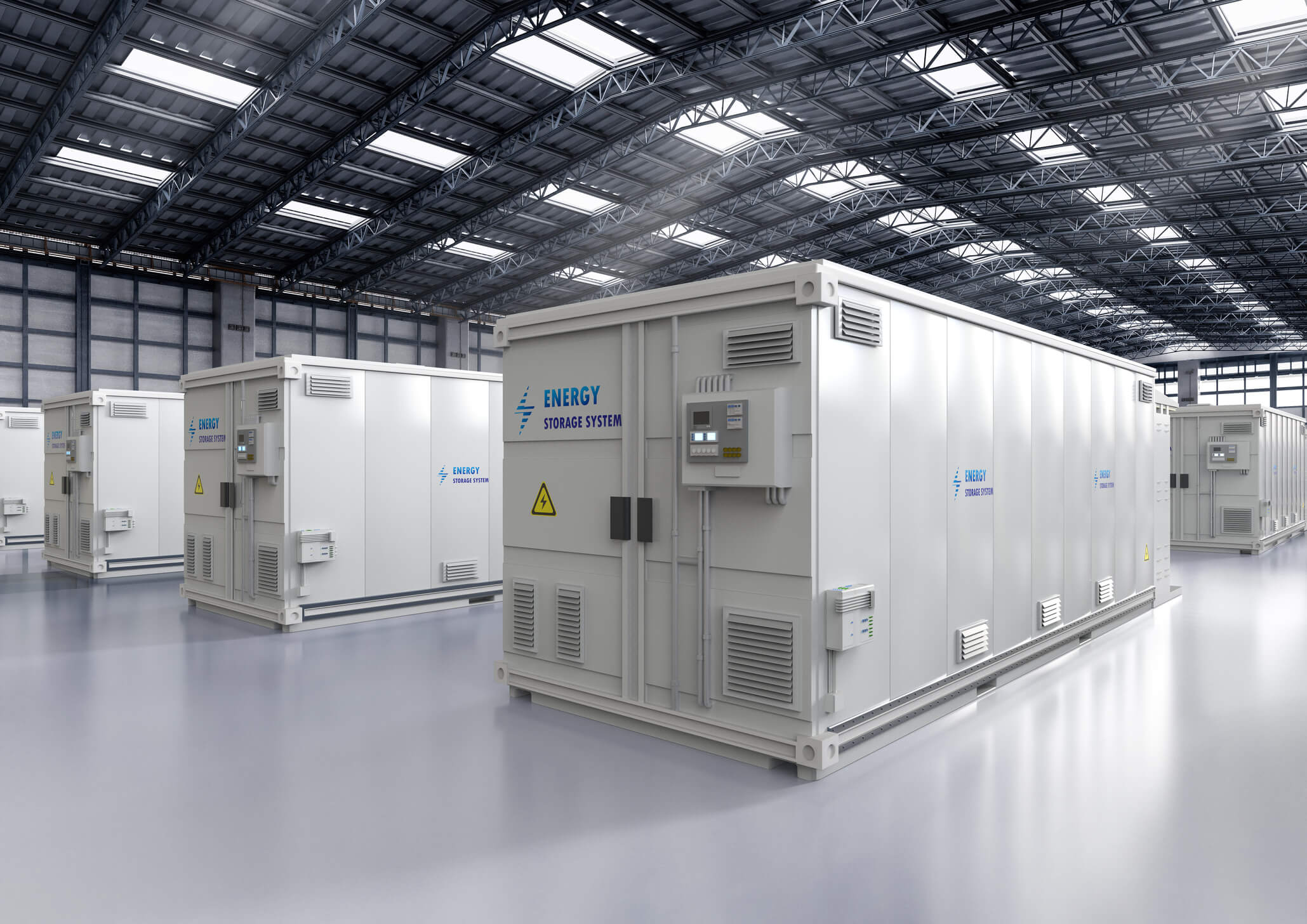The energy industry is gearing up for a battery storage boom throughout the remainder of 2025, driven by state and federal government incentives, declining battery unit costs and falling feed-in tariffs.
According to the newly released 2025 SunWiz Annual Battery Market Report, 72,500 battery installations were recorded in 2024 – a huge 27% increase on the previous year.
With so many businesses now considering investing in battery storage, we asked Flow Power’s battery specialists to help answer some of the most frequently asked questions.
How does a battery reduce my energy bills?
To learn how a battery can reduce your bills, first you need to understand how Australia’s wholesale electricity market works. All electricity passing through our interconnected electricity network (often referred to as ‘the grid’) is bought and sold in the wholesale market, where prices are set every 5 minutes based on supply and demand. Learn more
Batteries can help businesses cut costs by storing energy when prices in the grid are low, typically when there’s lots of renewable energy generated. Australia’s growing rooftop solar capacity is a key driver of these low wholesale prices in the market.
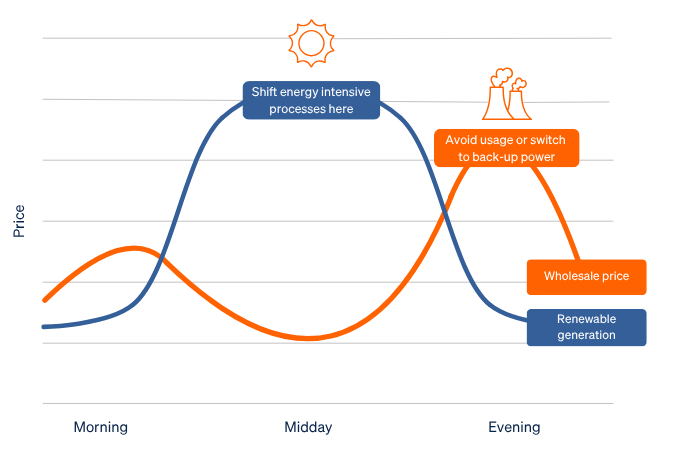
This low-cost energy can be stored, and later used when prices are high, helping businesses reduce usage from the grid during price spikes. High prices typically coincide with periods when thermal generators, like coal, make up a higher proportion of the grid fuel mix in order to meet demand.
To get the greatest potential for cost savings from a battery, businesses should consider electricity contracts with wholesale market exposure – like any of our contracts at Flow Power.
Wholesale price fluctuations can lead to significantly greater savings from a behind-the-meter battery when compared to savings on a flat rate or peak and off-peak tariff, because they link your business to the real-time price of electricity. Low and negative prices in the market are typically inaccessible on a standard electricity contract, meaning you could be losing out on potential savings.

Flow Power’s team of Engineers and Data Scientists have designed smart technology to help optimise your battery’s charge/discharge schedule and maximise your business’ potential energy bill savings.
What kind of battery do I need?
There’s no one-size-fits-all when it comes to batteries, and the size and configuration of your system will depend on your business’ goals and usage.
You can start by looking at your recent electricity bills to understand your average daily consumption.
Then, consider your goals:
- Are you planning to reduce your peak demand charges, or provide backup during power outages?
- Do you have existing solar generating excess energy that could be stored?
- Are you planning to charge the battery during low-price periods from the grid?
Your recent energy behaviour and your future goals will help determine the ideal battery size.
Once you have a rough idea of these factors, it’s important to factor in your budget and space constraints. Larger batteries will cost more and require more space, so finding a balance between your energy needs, budget and intended installation area is key.
The easiest way to ensure you select the right size for your business is to consult an expert. Flow Power’s solar and battery team can analyse your usage patterns, energy goals and site specifics to help choose the optimal battery size for your business.
Will the battery be able to back up my site in the event of a power outage?
Batteries can be used with, or as an alternative to, a generator to back up your whole site, or critical loads and electrical circuits that are sensitive to power outages.
When choosing the size of your battery, this will be a key consideration. We can help you size and configure your battery based on your energy demand, reliability needs and financial constraints.
This includes specifying a control solution that can reserve a portion of your battery day to day, to ensure energy is available in the event of a power outage.
Wondering how battery back up works? Learn more about how we helped Yarra Ranges Council increase energy resilience with battery storage here.
How do I monitor my battery’s performance?
Your business will have access to a monitoring platform via app or web portal showing energy usage, solar production, battery charge level, and grid interaction. This helps you track how your system is working in real time.
Which battery brand is right for my business?
There are more than 50 battery brands in the Australian market today, so choosing the right one for your business can be a tough choice. That’s why our team puts in the research and testing to ensure you can feel confident in the choice you make.
At Flow Power, we use and recommend 3 trusted brands, chosen for their high-quality battery cell technology, comprehensive warranties and trusted local support. However, our team is technology and brand agnostic meaning we can work with any existing battery systems or preferences your business may have.
How long does a battery last? What is the warranty period?
Warranty periods will depend on system sizes and brands.
For larger systems (greater than 2 MWh), it’s possible in some cases to get extended 20-year warranties.
For most smaller systems for businesses (between 50 – 500 kWh), warranties are typically 10 years or 10,000 cycles with batteries typically completing one full charge/discharge cycle per day.
We typically model batteries over 15 years to remain conservative, calculating the specific degradation of units over time. This is based on specifications from the manufacturers and is calculated for each unit’s given cycling conditions.
What government rebates are available?
There are many state incentives available to support investment in batteries, which can be paired with the upcoming Cheaper Home Batteries Program launching Australia-wide on July 1 2025.
Existing state and territory schemes in the NEM include:
- Energy Saver Loan (Tasmania) – interest free loans of $500 and $10,000 over three years to eligible households.
- Peak Demand Reduction Scheme (New South Wales) – up to $2,400 discount on installation + $400 for connecting to a VPP.
- Sustainable Household Scheme (Australian Capital Territory) – interest free loans of between $2000 to $15,000 to eligible ACT households.
Do I need to have solar before I invest in a battery?
It’s not essential to install a solar system before, or with a battery (unless you’re planning on applying for a rebate via the Cheaper Home Batteries Program).
Batteries can be installed as standalone systems, but we recommend switching to an electricity contract with a link to wholesale market pricing to get maximum benefit from your system.
On a Flow Power contract, your battery can charge with low-cost energy from the grid (typically when the fuel mix is more renewable) and discharge during peak periods, to reduce demand charges and help you save money.
However, if you have high daytime demand and network charges, or if you would like extended reliability in the event of a power outage, having solar installed alongside your battery system can be helpful. (We talk about this in more detail in our recent Battery Storage for Schools webinar – click here to watch it now.)
What is required for battery maintenance?
Battery systems are typically low maintenance under normal operation. However, we recommend periodic inspections, software updates if required and ongoing servicing if issues arise. This ensures the battery system remains safe, efficient and reliable.
If you purchase a battery with Flow Power, we will monitor the ongoing health of your system, ensuring you prolong its lifespan and maximise value from your investment.
Many businesses are now switching to batteries in place of generators to use as a backup asset. Batteries are quieter, cleaner, more cost-efficient to run and require less hands-on servicing than typical generators, making them an appealing alternative.
How are my future battery savings/revenue projections calculated?
The method and assumptions we use to invest in our own grid-scale battery assets is the same method we use for Flow Power customers.
- Our Engineers collect energy data from your site and use the latest forecasts to estimate future electricity prices for your state.
- Then, we build a 15-year energy energy and financial model to indicate costs, including your electricity contract, network tariffs and market charges.
- Lastly, we estimate project costs unique for your site, considering the size of the battery you need, any government grants available and your budget.
So, while we can’t predict the future, we’re confident that we do everything possible to comprehensively analyse battery revenues for your business.
Got additional questions about batteries?
We’re here to help.
Get in touch with our team of experts today.


